Doñana + Extremadura 05 - 11 April 2015 : private tour highlights
John Muddeman
11/09/2015 18:26:51
Summary report of a 7-day excursion focussing on the birds of these two fabulous birdwatching areas. Nearly 200 birds species were recorded, including many returning migrants, 20 species of diurnal raptors and a remarkable range of the scarcer and more sought-after species of S and W Spain.
Posted in: Birds, Mammals, Endangered Wildlife and Habitats | Andalusia, Extremadura | Mainland Spain, Southern Spain, Western Spain
Trip Report : Doñana + Extremadura 05-11 April 2015
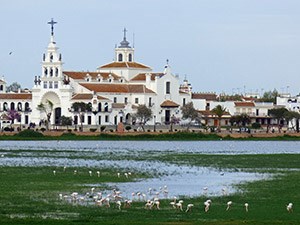 The marsh with Greater Flamingos at El Rocío© John MuddemanMick & Robin signed up for this regular Spainbirds Nature Tours trip, but were then very happy to take it on as a more personalised private option in order to secure it.
The marsh with Greater Flamingos at El Rocío© John MuddemanMick & Robin signed up for this regular Spainbirds Nature Tours trip, but were then very happy to take it on as a more personalised private option in order to secure it.
Birds were very much the main, but not totally exclusive focus, with plenty of photography ‘in passing’ quite easy given the range of sites we used and use of the vehicle as a hide on numerous occasions. Indeed one of the many highlights of the tour was a wonderful control of a colour-ringed wader we spent at least 30 minutes trying to get a decent shot of just to know where it was from… But more of that later!
With relatively cheap flights available these days for a Seville start and Madrid finish, Mick and Robin arrived relatively early allowing us a terrific first (almost) full day on the E side of the Guadalquivir, before finally calling it a long day and transferring to our base in El Rocío. This allowed us to access from the salinas and river mouth near Sanlúcar de Barrameda and nearby saltmarshes, through the seasonal wetlands and scrub / woodlands of Doñana to coastal habitats of the Odiel Estuary in the west, just during our few days in ‘Doñana’. 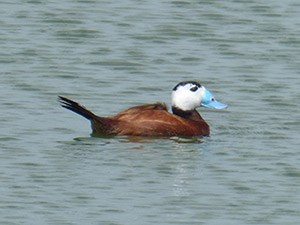 A dapper male White-headed Duck
A dapper male White-headed Duck
Oxyura leucocephala© John MuddemanCombining this with a few inland wetlands as well as low mountains, river valleys, rock outcrops and the pseudosteppe of the remainder of our time, in Extremadura, produced a tremendous series of sightings, and remarkable final list of 187 bird species seen and another 5 only heard, for the participants.
With a superb range of very rare and/or unusual species available in the European context along the route, it was no surprise that really choice birds came right from the start. A furtive Marbled Duck, gaudy Red-crested Pochards, pouting White-headed Ducks, dapper Black-necked Grebe, massed Greater Flamingos, the first of countless White Storks, and a mixed colony with Glossy Ibis, Eurasian Spoonbills, Black-crowned Night Herons, Squacco Heron, Western Cattle and Little Egrets would be good by anyone’s standards. But added to this were the first raptors including Red and Black Kites, Griffon Vultures, Short-toed Snake Eagle, Montagu’s Harrier, Booted Eagle and Lesser Kestrel, waders including noisy Black-winged Stilts, smart Pied Avocets, mournful sounding Grey Plover, Little Ringed and Kentish Plovers, a stunning summer-plumaged Bar-tailed Godwit amongst drabber brethren, plentiful Whimbrel, very close views of overactive Sanderling, tiny Little Stint, more stately Curlew Sandpipers and even the first of those ‘swallow-plovers’, Collared Pratincoles! Further gems included black-mouthed 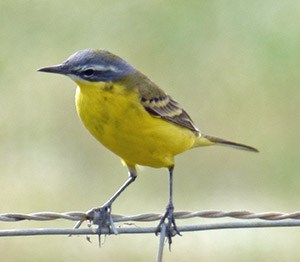 A super male Blue-headed Wagtail
A super male Blue-headed Wagtail
Motacilla flava flava© John MuddemanSlender-billed Gulls, a few Pallid Swifts (which were still massively outnumbering Commons at this stage), ‘Out of Africa’ treats such as European Bee-eater and Eurasian Hoopoe, flighty Iberian Magpies, buzzing Lesser Short-toed Larks, countless whistling Crested Larks, a couple of dainty Red-rumped Swallows, Cisticolas Zitting to their namesake, a rattling Sardinian Warbler, truly Spotless Starlings, a flock of tiny restless Common Waxbills, gorgeous golden-chested Iberian Yellow Wagtails, flocks of European Serins, a brief Cirl Bunting and the first of hundreds, or perhaps thousands of Corn Buntings seen over the course of the week… Day 1 was going to be hard to match!!!
But we added so much more too. Red-legged Partridge may be common in the UK, but it is introduced, and so sometimes overlooked as the gorgeous native bird it is here. Introduced Egyptian Goose is increasing rapidly in Extremadura, so it was sadly little surprise to see my very first ones on a tour in Spain, but better were some late Greylag Geese, smart Common Shelduck, a few dainty Garganey, a near-rarity in the form of a glorious male Ferruginous Duck, and even three late Red-breasted Mergansers still wintering in an estuary! Audouin’s Gulls, Whiskered and Black Terns, Great Crested Grebes, Black Storks, Little Bittern, Purple Heron, Great Egret, Purple Swamphen and Red-knobbed Coots all further livened up a variety of coastal and wetland sites along the route too. Reintroduced Western Ospreys at one site were nicely backed-up by a migrant bird at another, while a few stunning Black-winged Kites graced the Extremaduran countryside along with a few Egyptian Vultures,  Male Montagu's Harriers are gorgeous birds
Male Montagu's Harriers are gorgeous birds
Circus pygargus© John MuddemanCinereous (AKA Black!) Vultures, a stunning pair of Spanish Imperial Eagles, a single Golden and no less than three adult Bonelli’s Eagles too! No surprise that with late Hen Harriers and Merlin, plus Peregrine Falcon and few others, that we recorded 20 diurnal raptors on the tour, despite no Sparrowhawk! Plenty of foot-stomping Great Bustards, but just one ‘farting’ Little Bustard (following a desperate and continuing decline in Extremadura), wailing Eurasian Stone-curlew and shuffling Black-bellied Sandgrouse graced the grassy steppes, while Common Cuckoo, impressive Eurasian Eagle-owl, glaring Little Owl, ‘wickering’ Alpine Swift, gaudy European Roller and Common Kingfisher, a furtive Eurasian Wryneck, plus powerful Iberian Grey and ever smart Woodchat Shrikes showed exactly why Extremadura is still so good to visit, and complementary to further south.
Numerous smaller birds obviously got a serious look-in too, including perky European Crested Tit, masked Eurasian Penduline Tit, Bearded Reedlings whizzing over the reedmace beds, ‘surround sound’ Calandra Larks far outshining their Greater Short-toed cousins on the steppes, Thekla and Wood Larks in the vast swathes of Western Holm Oak dehesa, Eurasian Crag Martins chirping around the rock outcrops, Cetti’s Warblers yelling from dense cover, Iberian Chiffchaffs mixing it up in the willows of Doñana, dainty migrant Western Bonelli’s Warblers hiding in the bushes, returning Great Reed, Eurasian Reed and Melodious, plus migrant Sedge Warblers all singing to various degrees, along with numerous buzzing Savi’s Warblers on the last morning. Their songs helped us find a few white-eyed Western Orphean, skulking Subalpine and red-eyed Dartford Warblers, the latter two with their wafting butterfly-like song flights, along with much louder 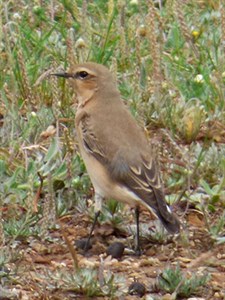 Female Western Black-eared Wheatears
Female Western Black-eared Wheatears
can be tricky to ID
Oenanthe hispanica hispanica© John MuddemanCommon Nightingales, ‘radio-tuning’ Black Redstarts and silent migrant Common Redstarts and Whinchats. Northern and Black-eared Wheatears, a few stunning blue male Blue Rock Thrushes, dynamic crowds of Spanish Sparrows, and a few Eurasian Tree and chunky Rock Sparrows just further illustrate the diversity round every corner. A true fall of around 300 Western Yellow Wagtails in Doñana one day was exciting, with abundant Iberian iberiae and Blue-headed flava, 10+ British Yellow flavissima and even two Ashy-headed cinereocapilla amongst them. Fabulous fun to watch them and work out what was what! Other migrants included a couple of Tawny and a number of Water Pipits at one wetland, while other notable residents included a few gorgeous Hawfinches and Rock Buntings…
It's rare that I divert off to see something for personal reasons, but when it's a smart vagrant Lesser Yellowlegs, then perhaps I could be excused, and we had a terrific session watching this delightful wader. And indeed it was another wader which brought us one of other main highlights noted above. A colour-ringed Kentish Plover "Green 121" was feeding in the salinas on the first day and attracted our attention, but when just a few days after returning from the tour Mick got the reponse from the colour-ring coordinator that it was one of his own birds from the NW cost of France, which had travelled at least 1470km to get back there by 12th, was terrific! And even more so when she was observed paired to a male on 25th and breeding!
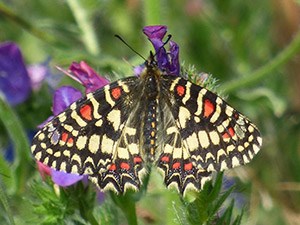 The colourful Spanish Festoon
The colourful Spanish Festoon
Zerynthia rumina© John MuddemanA few other ‘bits and bobs’ were noted too en route, including a variety of butterflies including the exquisite Spanish Festoon amongst others, while mammals included European Rabbit (which is still locally rare in Spain, despite being so abundant in the past that the country was named after it – Hispania of the Romans), a few delightful Iberian Hares, a couple of Roe Deer (very much on the increase in lowland C & W Spain), and single Wild Boar and Eurasian Otter. And almost all during the day in the generally fine conditions we experienced virtually throughout a terrific tour!
"Really enjoyed our trip - in no small part to your local knowledge , ID and sound recognition skills." Mick
.
.
.
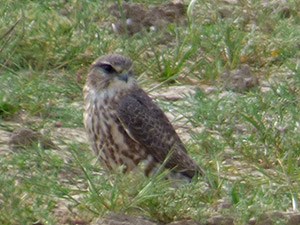 A lovely Merlin surveys its surrundings
A lovely Merlin surveys its surrundings
Falco columbarius© John Muddeman.
.
.
.
.
.
.
.
.
.
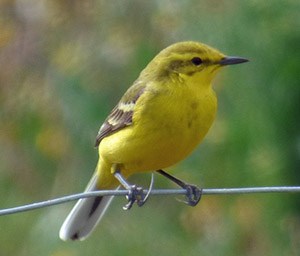 A smart British Yellow Wagtail
A smart British Yellow Wagtail
Motacilla flava flavissima© John Muddeman.
.
.
.
.
.
.
.
.
.
.
.
.
.
.
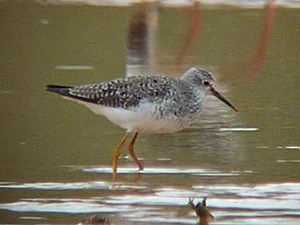 A 'stonking' vagrant Lesser Yellowlegs
A 'stonking' vagrant Lesser Yellowlegs
Tringa flavipes© John Muddeman.
.
.
.
.
.
.
.
.
.
.
.
.
.
.
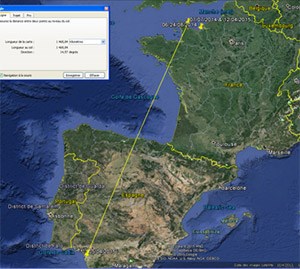 Kentish Plover "Green 121" locations 5-12 April 15© J. Jean Baptiste.
Kentish Plover "Green 121" locations 5-12 April 15© J. Jean Baptiste.
.
.
.
.
.
.
.
.
.
.
.
.
.
.
.
.
.
.
.
.
.
.
.
.
.
.
.
.
.
.
.
.
.
.
.
.
.
.
.
.
Read more blog posts